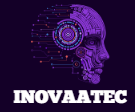Disruptive problem-solving is a powerful approach that challenges traditional methods, encouraging innovative thinking to tackle modern challenges. By breaking away from conventional solutions, this strategy fosters creativity and adaptability, enabling individuals and organizations to address complex problems more effectively. In a rapidly evolving world, thinking outside the box is essential for staying ahead.
This approach thrives on collaboration, technology, and user-centric solutions. By integrating diverse perspectives and leveraging cutting-edge tools, disruptive problem-solving transforms obstacles into opportunities. It enhances organizational performance, improves decision-making, and drives competitive advantage, making it a crucial skill in today’s dynamic environment.
Embracing disruptive problem-solving can redefine how challenges are approached and solved. Understanding its principles and applications can unlock new ways to drive innovation and success. Keep reading to explore how this method can reshape your problem-solving strategies.
Understanding Disruptive Problem-Solving
Understanding Disruptive Problem-Solving is crucial for navigating today’s complex landscape. This innovative approach shifts the focus from traditional methods to creative, unconventional solutions. Disruptive problem-solving encourages individuals and teams to think outside the box, challenging norms and fostering the ability to adapt to change.
What is Disruptive Problem-Solving?
Disruptive problem-solving leverages creativity and out-of-the-box thinking to tackle challenges. Instead of merely improving existing processes, it involves rethinking and reformulating approaches to problems. This method can lead to breakthrough ideas and solutions that can significantly impact organisations and industries.
Why is it Important?
In an ever-evolving world, sticking to conventional solutions can be a major drawback. Disruptive problem-solving not only helps in finding immediate solutions but also prepares teams to face future challenges. By embracing change and innovation, businesses can remain competitive and relevant.
Core Principles
Several core principles underpin disruptive problem-solving. These include:
- Empathy: Understanding the needs and experiences of others to create user-centered solutions.
- Iterative Thinking: Embracing a trial-and-error mentality to refine ideas continuously.
- Collaboration: Working in teams to combine diverse perspectives and skills effectively.
Examples of Disruption
Several successful companies have used disruptive problem-solving to lead their industries. For instance, Uber transformed the transport sector by offering a more efficient method of booking rides. Similarly, Netflix changed how we consume media, moving from DVD rentals to a streaming model. These examples show the power and potential of this approach.
Benefits for Individuals and Teams
Adopting a disruptive problem-solving mindset can lead to numerous benefits for both individuals and teams. It fosters innovation, enhances collaboration, and encourages a proactive approach to challenges. Teams that embrace this strategy typically see improved morale and engagement, as members feel empowered to contribute ideas and solutions.
The Importance of Creative Thinking
The Importance of Creative Thinking cannot be overstated in the realm of disruptive problem-solving. Creative thinking fuels innovation and enables individuals and teams to draw connections between seemingly unrelated ideas. It sparks new approaches, leading to unique solutions that can help navigate complex challenges.
Enhancing Problem-Solving Skills
When individuals engage in creative thinking, they enhance their problem-solving capabilities. By approaching problems from different angles, they can identify alternatives that may not be immediately apparent. This flexibility is key to finding effective resolutions to difficult situations.
Encouraging Innovation
Creative thinking is at the heart of innovation. In an ever-changing world, businesses that encourage and foster creative thinking are more likely to stay ahead of competitors. It allows them to anticipate trends and adapt quickly to shifts in the market, resulting in sustained growth and relevance.
Building Resilience
Creative thinkers are often more resilient. They tend to view obstacles as opportunities for learning and growth. This mindset helps teams persevere through challenges, maintaining a positive outlook and commitment to finding solutions.
Fostering Collaboration
When teams embrace creative thinking, collaboration thrives. Individuals from diverse backgrounds bring unique perspectives, leading to richer discussions and more comprehensive solutions. This collaborative atmosphere encourages risk-taking and experimentation, essential components for effective problem-solving.
Impact on Business Culture
A culture that values creative thinking fosters motivation among employees. When individuals feel their ideas are heard and valued, their engagement and satisfaction increase. This positive environment cultivates innovation and aids in retaining top talent.
Techniques to Encourage Creative Thinking
There are several techniques that can inspire creative thinking within teams, including brainstorming sessions, mind mapping, and encouraging open dialogue. Allowing time for reflection and exploration of ideas can lead to unexpected but valuable insights.
Techniques for Disruptive Problem-Solving

Techniques for Disruptive Problem-Solving are essential for fostering innovation and enabling teams to tackle challenges effectively. By employing various methods, individuals can unlock their creativity and drive impactful solutions. Here are some effective techniques:
Brainstorming Sessions
Hosting brainstorming sessions encourages open dialogue among team members. This technique allows participants to freely share ideas without judgment. Capturing all ideas can lead to unexpected solutions and promote collaboration.
Mind Mapping
Mind mapping is a visual technique that helps individuals organise their thoughts. By creating a diagram that connects ideas around a central theme, teams can explore various aspects of a problem and identify potential solutions.
Reverse Thinking
Reverse thinking involves approaching a problem by considering the opposite of the desired outcome. This method can reveal contradictions and lead to new perspectives on how to resolve the issue effectively.
Prototyping and Testing
Creating prototypes allows teams to experiment with their ideas in a practical way. By developing a basic version of a solution, individuals can test its feasibility and gather feedback, making adjustments as necessary.
Role-Playing
Role-playing techniques enable team members to put themselves in the shoes of various stakeholders. This empathetic approach helps individuals understand different perspectives and identify potential challenges in a solution.
Collaborative Tools
Utilising collaborative tools can significantly enhance teamwork during the problem-solving process. Tools like online whiteboards and project management software can streamline communication and documentation, making it easier for teams to work together effectively.
Continuous Learning
Encouraging a culture of continuous learning helps teams remain adaptable. By staying updated with industry trends and new technologies, individuals will be better equipped to apply disruptive problem-solving techniques to their work.
Real-World Examples of Disruptive Solutions
Real-World Examples of Disruptive Solutions illustrate how innovative thinking can revolutionise industries and lead to significant changes in the way we live and work. Here are some notable examples of disruptive solutions:
1. Airbnb
Airbnb disrupted the hospitality industry by allowing individuals to rent out their homes or spare rooms. This peer-to-peer model challenged traditional hotels, offering travellers unique and often more affordable accommodation options.
2. Uber
Uber transformed the transportation sector by introducing a mobile app that connects drivers with passengers. This model not only made hailing a ride more convenient but also disrupted traditional taxi services, leading to changes in regulations worldwide.
3. Netflix
Netflix started as a DVD rental service but reinvented itself by launching a streaming service. This shift allowed users to consume content on-demand, thus disrupting cable television and changing how we view entertainment. Netflix’s investment in original programming further solidified its disruptive position.
4. 3D Printing
3D printing technology has disrupted manufacturing by allowing creators to produce items on demand. This technology reduces waste, lowers production costs, and enables rapid prototyping, making it easier for entrepreneurs to turn their ideas into tangible products.
5. Tesla
Tesla disrupted the automotive industry with its focus on electric vehicles. By creating high-performance electric cars and expanding charging infrastructure, Tesla urged traditional car manufacturers to innovate and adapt, promoting a shift toward sustainable energy solutions.
6. Spotify
Spotify revolutionised the music industry by offering a streaming service with millions of tracks available on-demand. This model transformed how music is consumed and challenged the traditional music purchasing system, affecting artists’ revenue models.
7. Shopify
Shopify made it easier for entrepreneurs to create online stores without needing extensive technical knowledge. This platform disrupted retail by providing a simple solution for starting and managing eCommerce businesses, thereby lowering barriers to entry in the market.
Challenges in Implementing New Strategies
Challenges in Implementing New Strategies often arise when organisations attempt to adapt to change. Understanding these challenges is essential for effective disruptive problem-solving. Here are some common obstacles teams may face:
1. Resistance to Change
Individuals may resist new strategies, fearing the unknown or preferring to stick with familiar methods. This can lead to pushback that hinders progress and implementation.
2. Lack of Resources
Implementing new strategies often requires adequate resources, including time, money, and personnel. Limited resources can prevent teams from executing changes effectively and can lead to inadequate results.
3. Insufficient Training
When employees are not properly trained on new strategies or tools, misunderstandings and errors can occur. Providing thorough training is vital to ensure everyone understands their roles and the new processes.
4. Poor Communication
Communication breakdowns can create confusion among team members. Clear and consistent communication about the strategy, expectations, and roles is crucial for successful implementation.
5. Overcomplicated Processes
If new strategies are overly complicated, it can overwhelm employees and lead to mistakes. Simplicity is key; strategies should be straightforward and easy to understand to encourage acceptance and adherence.
6. Inflexibility
Being too rigid in the implementation process can restrict creativity and adaptation. Teams should remain open to feedback and adjustments during the implementation of new strategies.
7. Measuring Impact
Without clear metrics to assess the success of implemented strategies, it can be difficult to gauge effectiveness. Establishing key performance indicators (KPIs) before execution helps in evaluating success and making necessary adjustments.
Measuring Success in Problem-Solving

Measuring Success in Problem-Solving is crucial for understanding the effectiveness of strategies implemented within an organisation. Identifying clear metrics can help assess how well a solution is working. Here are some important ways to measure success:
1. Defining Objectives
Establishing specific, measurable, achievable, relevant, and time-bound (SMART) objectives at the start allows teams to evaluate their progress effectively. These objectives serve as benchmarks against which success can be measured.
2. Key Performance Indicators (KPIs)
Utilising KPIs provides quantitative metrics to track performance. Examples of KPIs can include the rate of customer satisfaction, reduction in costs, and improvements in efficiency. Choosing the right KPIs to align with objectives is essential.
3. Feedback Loops
Creating feedback loops involves regularly gathering insights from stakeholders, including team members and customers. This feedback can highlight the effectiveness of solutions and identify areas for improvement.
4. Data Analysis
Collecting and analysing relevant data can provide valuable insights into the success of implemented strategies. Data analysis helps in understanding trends and patterns that indicate whether a strategy is successful.
5. Continuous Improvement
Measuring success is not a one-time process; continuous improvement should be encouraged. Regularly reviewing strategies and their outcomes allows for adjustments and enhancements based on findings.
6. Employee Engagement
Monitoring employee engagement can also reflect the success of problem-solving strategies. Highly engaged employees are more likely to contribute positively to the implementation of solutions and drive success within the organisation.
7. Return on Investment (ROI)
Calculating ROI helps assess the financial impact of implemented strategies. It compares the gains from the solution against the costs incurred, providing insights into overall effectiveness.
Future Trends in Problem-Solving
Future Trends in Problem-Solving are constantly evolving as technology and societal needs change. Staying updated on these trends is essential for organisations aiming to remain competitive and innovative. Here are some notable future trends in problem-solving:
1. Artificial Intelligence and Machine Learning
AI and machine learning will play a significant role in automating problem-solving processes. These technologies can analyse vast amounts of data quickly, offering insights and generating solutions that may be beyond human capability.
2. Collaborative Problem-Solving Platforms
As remote work becomes more common, collaborative platforms will gain prominence. These tools will enable teams to work together seamlessly, regardless of location, fostering a shared approach to solving problems.
3. Data-Driven Decision Making
Integrating data analytics into problem-solving processes will be crucial. Making decisions based on data insights allows teams to identify patterns, assess risks, and evaluate the effectiveness of solutions more accurately.
4. Design Thinking
Design thinking, focusing on user needs, will become a more prevalent approach to problem-solving. By prioritising empathy and iterative processes, teams can develop solutions that better meet the desires and requirements of users.
5. Agile Methodologies
Agile methodology will continue to dominate problem-solving approaches in various sectors. This iterative process encourages constant feedback, allowing teams to adjust their solutions to better fit evolving needs.
6. Sustainability and Ethical Considerations
In the future, problem-solving will increasingly involve sustainability and ethics. Organisations will need to consider the environmental and social impacts of their solutions, ensuring responsible and ethical decision-making.
7. Enhanced Reality Technologies
Augmented reality (AR) and virtual reality (VR) will offer innovative ways for teams to visualise and engage in problem-solving. These technologies can provide immersive experiences that help in understanding complex problems and assessing potential solutions.
Embracing Disruptive Problem-Solving
Disruptive problem-solving represents a transformative approach that encourages creativity, innovation, and adaptive strategies for overcoming modern challenges. By understanding its principles and techniques, teams can unlock unique solutions that enhance efficiency and effectiveness.
As we have explored, real-world examples demonstrate the impact of disruptive solutions across various industries, while future trends highlight the importance of technological advancements and ethical considerations in problem-solving.
Ultimately, by measuring success and navigating the challenges of implementation, organisations can leverage disruptive problem-solving to stay competitive and meet the ever-evolving needs of their stakeholders. Embracing this approach is crucial for driving growth and fostering a culture of innovation.
Check out our article on Emerging Technologies to explore the latest innovations shaping the future of various industries.
